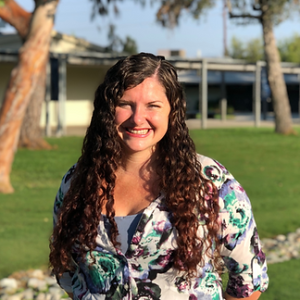96. Craniosacral Therapy for Infants and Newborns
By Dr. Sarah Dirks, DC "The pressure used during therapy is less than the weight of a nickel and most of the movements are so slight that they are often missed by the parents as the practitioner moves through the treatment. "

It’s 2:00 in the morning and your one month old newborn has been screaming since midnight. You and your partner have tried everything… nursing/bottle, diaper change, warm bath, rocking, bouncing, white noise, singing, a walk outside… but the screaming seems endless. This continues for several days and you both decide to call the pediatrician. You are told that your baby is perfectly healthy, the screaming is normal, and there is nothing to worry about. Now what? Do you just grit and handle the screams every night? What other options do you have? You still feel like something is off and that your baby is in some pain or discomfort. You and your partner may even feel lost as to what to do next.
Navigating the first year of a baby’s life can be extremely challenging for any parent. Pediatrician, night nurse, lactation consultant, physical therapist, chiropractor, occupational therapist, myofunctional therapist, pediatric dentist… Sometimes it feels like there is an overwhelmingly endless list of people to help your child. Let’s take a deeper look into the option of craniosacral therapy to help you decide if it is the best option to help your child.
What is craniosacral therapy?
Craniosacral therapy is a very gentle manual technique used to assess and enhance the function of the structures surrounding the brain and spinal cord. Alleviating tension in these structures can promote improved functioning in the nervous system and subsequently the other bodily systems, which allows the body to respond better to the stressors of life. Craniosacral therapy facilitates the body’s natural healing process and can therefore be used to increase the body’s resistance to disease.

What can craniosacral therapy help with?
Craniosacral therapy can help infants who struggle with many different ailments. Some of the most common are difficulty gaining weight, latching issues, colic, reflux, gassiness, difficulty sleeping, mouth breathing, torticollis and/or muscle tension (clenching fists constantly or straightening legs/arching back during diaper changes.)
Is craniosacral therapy safe?
The pressure used during therapy is less than the weight of a nickel and most of the movements are so slight that they are often missed by the parents as the practitioner moves through the treatment. With this small amount of pressure it is safe to use on most infants and newborns, however it should not be used in conditions in which a slight change in intracranial pressure would cause instability.

What to expect during craniosacral therapy.
Craniosacral therapy is typically performed in a quiet, calm, dimly lit room with the infant lying comfortably on a massage table. The practitioner will first identify the craniosacral rhythm by placing their hands gently on the baby. They will then feel the baby’s head, neck, torso, and spine while assessing and alleviating tension in the craniosacral system. Many of the movements are so subtle that they can be imperceivable except for the calming effect and relief seen in the child.
What if my baby cries constantly or doesn’t sit still?
Don’t stress if your child is fussy or has the wiggles during an appointment. Some treatments occur while infants are breastfeeding or even with them laying on top of a parent. A skilled therapist has encountered a wide array of baby obstacles and has many options to help calm them. Typically by the end of the session the baby is relaxed, quiet, and/or sleeping.

Dr. Sarah Dirks is a pediatric and prenatal chiropractor, specializing in craniosacral therapy and Webster Technique. She received her doctorate of chiropractic at Los Angeles College of Chiropractic in 2010. Dr. Dirks is in private practice and collaborates frequently with midwives, lactation specialists and pediatric dentists to provide a comprehensive treatment for all of her patients.
She is a wife and mom to a one year old daughter and a three year old son. In her free time she enjoys spending time with her family, as well as swimming, traveling and going to concerts. After having her son, who was colicky, tense, and struggled to gain weight, she began to dive deeper into craniosacral therapy. The technique gave him so much needed relief.


